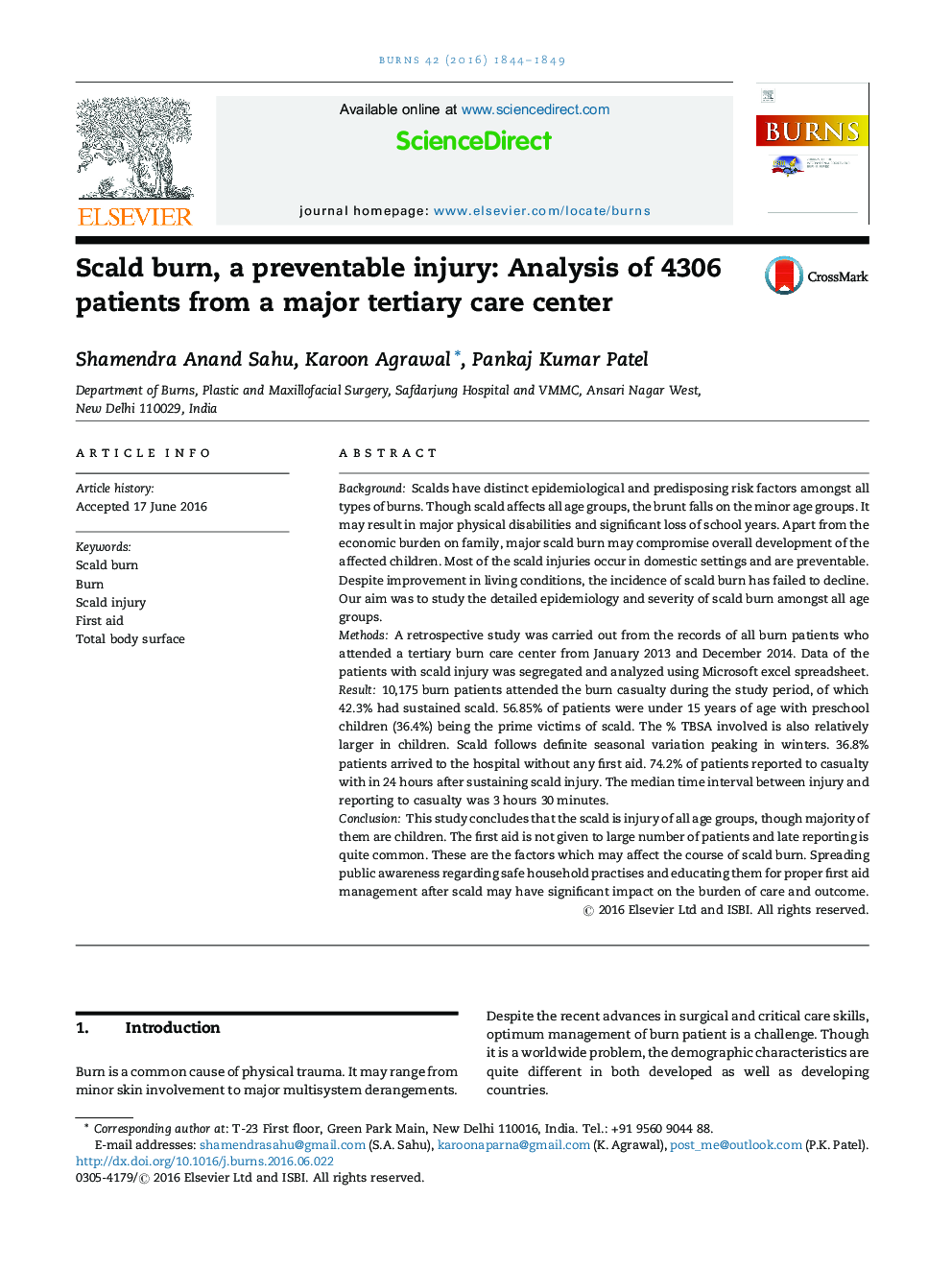| Article ID | Journal | Published Year | Pages | File Type |
|---|---|---|---|---|
| 5636210 | Burns | 2016 | 6 Pages |
â¢Data of 4306 scald patients presented over 2 year duration was analyzed.â¢45.45% of scald burn patients were adults.â¢Severity of scald is reciprocal to the age of the patients.â¢Only about one third patients received appropriate first aid treatment.â¢Preventive educational programs for scald should emphasize on safe household practices.
BackgroundScalds have distinct epidemiological and predisposing risk factors amongst all types of burns. Though scald affects all age groups, the brunt falls on the minor age groups. It may result in major physical disabilities and significant loss of school years. Apart from the economic burden on family, major scald burn may compromise overall development of the affected children. Most of the scald injuries occur in domestic settings and are preventable. Despite improvement in living conditions, the incidence of scald burn has failed to decline. Our aim was to study the detailed epidemiology and severity of scald burn amongst all age groups.MethodsA retrospective study was carried out from the records of all burn patients who attended a tertiary burn care center from January 2013 and December 2014. Data of the patients with scald injury was segregated and analyzed using Microsoft excel spreadsheet.Result10,175 burn patients attended the burn casualty during the study period, of which 42.3% had sustained scald. 56.85% of patients were under 15 years of age with preschool children (36.4%) being the prime victims of scald. The % TBSA involved is also relatively larger in children. Scald follows definite seasonal variation peaking in winters. 36.8% patients arrived to the hospital without any first aid. 74.2% of patients reported to casualty with in 24Â hours after sustaining scald injury. The median time interval between injury and reporting to casualty was 3Â hours 30Â minutes.ConclusionThis study concludes that the scald is injury of all age groups, though majority of them are children. The first aid is not given to large number of patients and late reporting is quite common. These are the factors which may affect the course of scald burn. Spreading public awareness regarding safe household practises and educating them for proper first aid management after scald may have significant impact on the burden of care and outcome.
